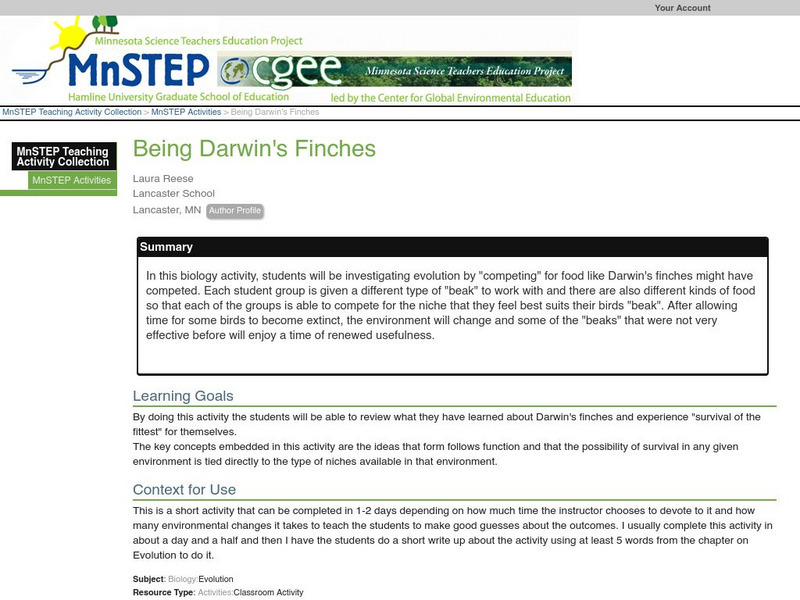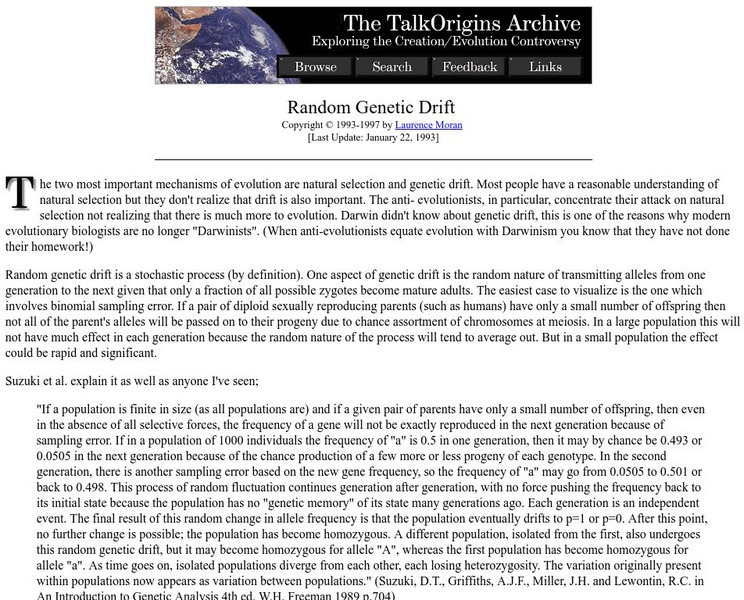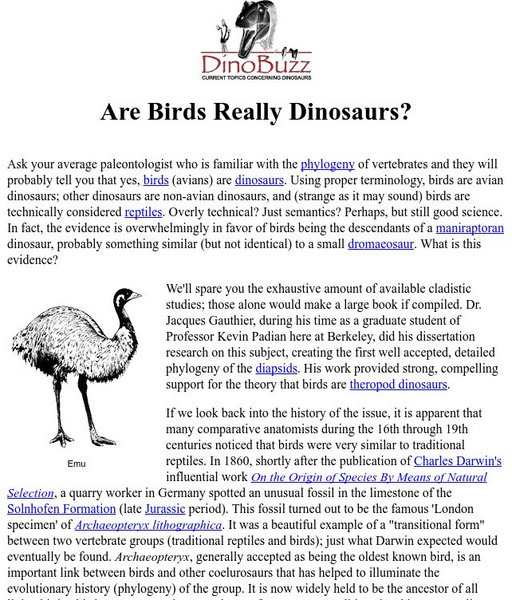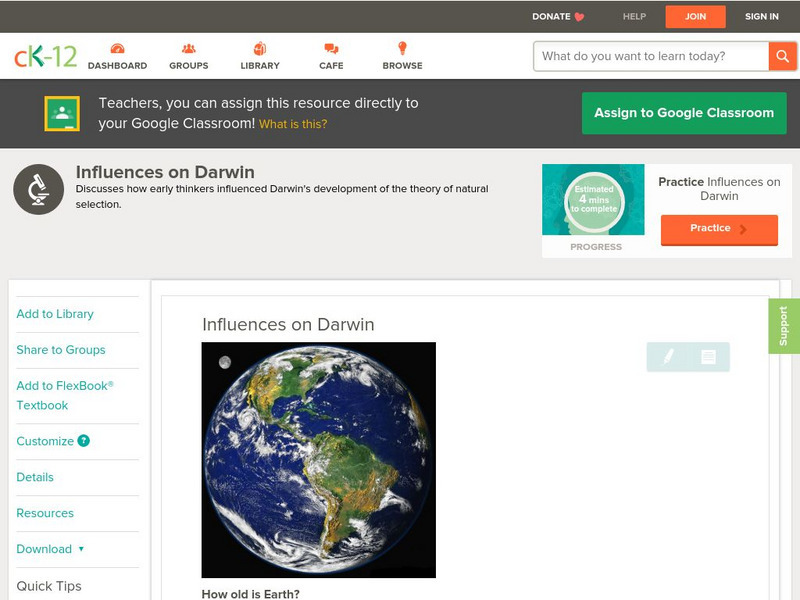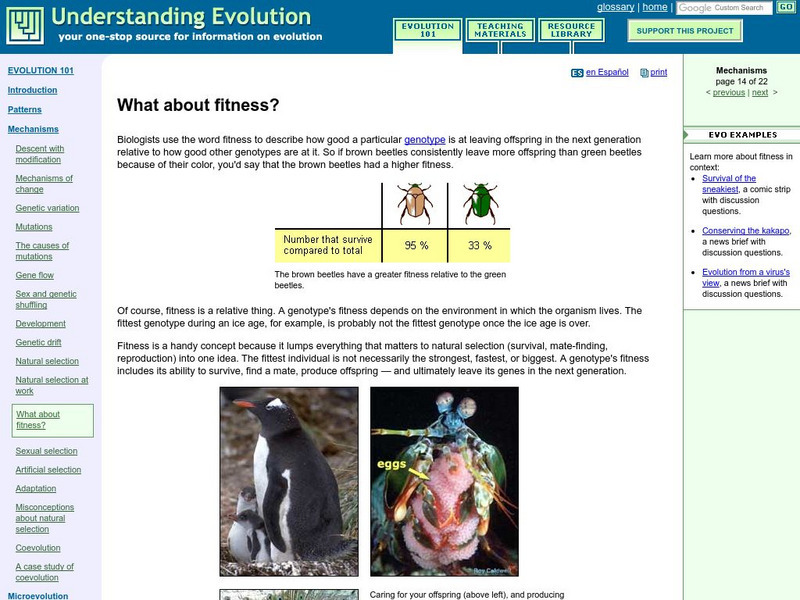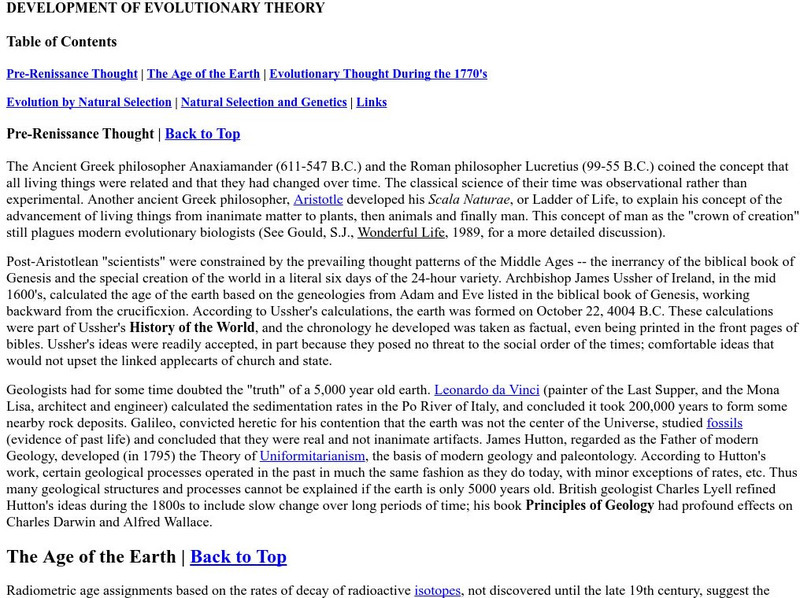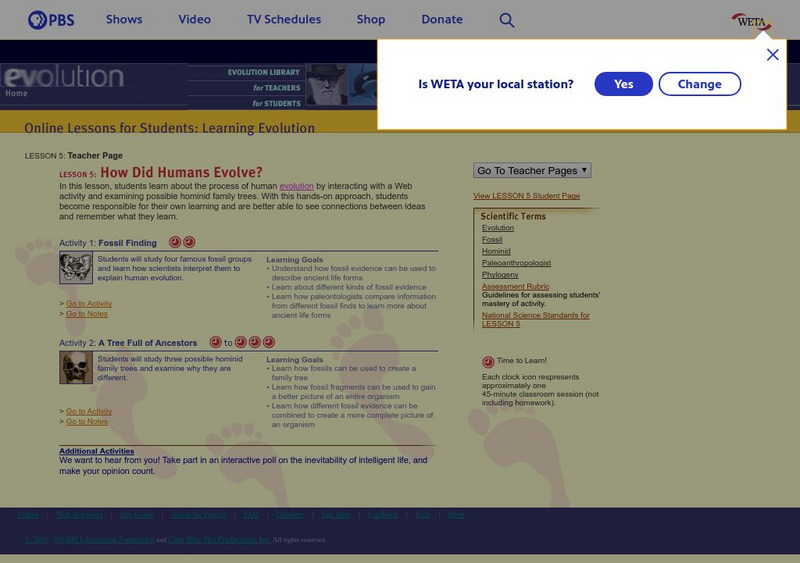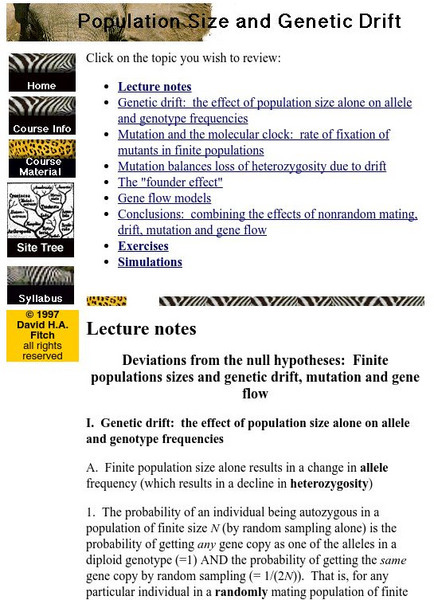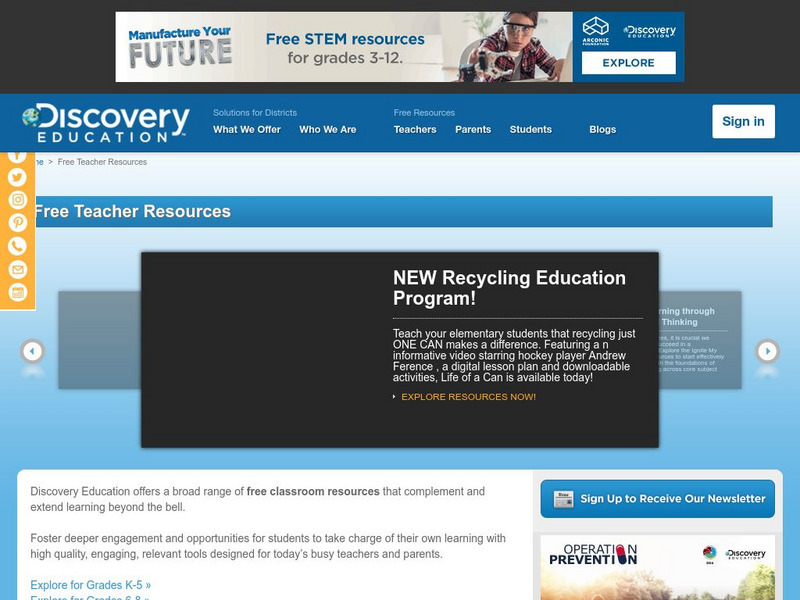Science Education Resource Center at Carleton College
Serc: Being Darwin's Finches
In this biology activity, students will be investigating evolution by "competing" for food like Darwin's finches might have competed. Each student group is given a different type of "beak" to work with and there are also different kinds...
Talk Origins Archive
Talk Origins Archive: Random Genetic Drift
Laurence Moran discusses one of the most important mechanisms of evolution, Random Genetic Drift.
Google
Google Maps: Galapagos Islands
Explore isolated volcanic islands. Charles Darwin's observations and collections of the Galapagos wildlife in 1835 contributed to his theory of evolution by natural selection. [7:08]
CK-12 Foundation
Ck 12: Biology: Principles of Biology
[Free Registration/Login may be required to access all resource tools.] Covers four unifying principles of biology: cell theory, gene theory, homeostasis, and evolutionary theory.
Sacred Text Archive
The Descent of Man Full Text
This site has the complete text of Charlies Darwin's "Descent of Man."
University of California
Ucmp: Are Birds Really Dinosaurs?
A great essay that illustrates how science is done as well as the relationship between dinosaurs and modern birds. Includes a picture to illustrate this concept, and contains many links to related sites.
CK-12 Foundation
Ck 12: Life Science: Influences on Darwin
[Free Registration/Login may be required to access all resource tools.] When Darwin returned to England at the end of his voyage, he did not rush to announce his discoveries. He did not want to present any ideas unless he had strong...
University of California
University of California Museum of Paleontology: What About Fitness?
An explanation of the concept of fitness and its relation to evolution and how inherited characteristics may change.
CK-12 Foundation
Ck 12: Life Science: 4.9 Origin of Species
Understand how species develop and change over time.
Estrella Mountain Community College
Online Biology Book: Development of Evolutionary Theory
Using diagrams and descriptive illustrations, this college-level biology reference book discusses the development of evolutionary theory.
Khan Academy
Khan Academy: Gallery: Voyage of the Beagle
The HMS Beagle, carrying Charles Darwin, sailed for five years and circumnavigated the world. Darwin recorded his observations in journals and later published them in 1839. This site contains pictures related to this expedition.
Cornell University
Cornell University: Library: Charles Darwin After the Origin
In honor of Darwin's 200th birthday and the 150th anniversary of the publication of "The Origin of the Species," Cornell has put together an extensive collection of Darwin's work during the last two decades of his life.
Vision Learning
Visionlearning: Ideas in Science: Theories, Hypotheses, and Laws
Learning module looking at scientific explanations. Discussion covers theories and how they develop, some well-known theories and their origins, and how theories are revised and refined. Also, covers hypotheses and laws. The three...
University of Arizona
The Biology Project: Genetic Drift: An Explanation
This explanation of genetic drift is straightforward and easy to understand. Illustrations are provided to help visual learners
PBS
Pbs Learning Media: Sex and the Single Guppy
Play in our streams and see how exhibitionism has an evolutionary payoff in this simulation of John Endler's famous experiment. Includes background information and discussion questions.
Wonderville Media
Wonderville: Charles Darwin
Charles Darwin was born in England on February 12, 1809. He was a "naturalist," best known for his theories of evolution. Darwin collected evidence that all life on Earth "evolved" from a common ancestry. He studied the process of...
PBS
Pbs Teachers:how Did Humans Evolve?
Explore paleoanthropology by going on a virtual "dig" to answer questions about famous fossil finds. Explain how alternate hominid family trees result from different interpretations of the same fossil evidence.
Georgia Department of Education
Ga Virtual Learning: Ap Biology: Evolutionary Biology
Through informational text, interactive activities, animations, and video clips, students investigate evolutionary biology.
Blackdog Media
Classic Reader: Authors: Charles Darwin
This site features the author Charles Darwin including the full text of the nonfiction book Origin of Species.
New York University
Population Size and Genetic Drift: Lecture Notes
This is a college level lecture on genetic drift, complete with mathmatic formulae, includes special links.
University of California
Ucmp: A History of Evolutionary Thought
Museum site note on the history of evolutionary thought and includes scientists and thinkers who have contributed to our understanding of life on Earth. Links are provided for da Vinci, Linneaues, Erasmus Darwin, and others.
Blackdog Media
Classic Reader: Origin of Species by Charles Darwin
Read the full text of "Origin of Species", considered to be the foundation of evolutionary biology, by Charles Darwin on this site.
Discovery Education
Discovery Education: Explore Galapagos
This site provides a fun way of exploring the Galapagos Islands through pictures, sound, videos, games, learning exercises, and more.
TeachEngineering
Teach Engineering: The Benefits of Biodiversity
First, students toss coins to determine what traits a set of mouse parents possess, such as fur color, body size, heat tolerance, and running speed. Next they use coin tossing to determine the traits a mouse pup born to these parents...


